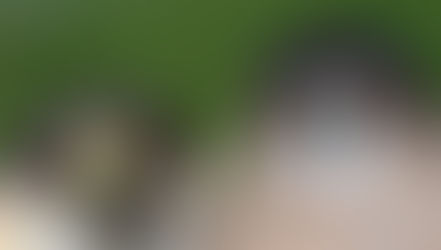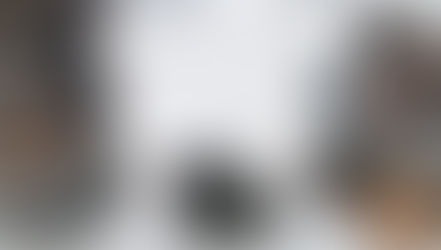How to make homemade hummingbird food | Hummingbird nectar DIY
- Flocking Around

- May 2, 2025
- 5 min read
It has become commonplace for bird lovers to remind their friends and neighbors about the potential problems of using hummingbird nectar with red dye.

Keep up with the flock and do not fall behind! Join our flock!
What is natural hummingbird food? | What do hummingbirds eat?
Many think of hummingbirds as only eating nectar and sugar water. However, it may surprise you to know that the diet of hummingbirds varies widely, depending upon species, location, food availability, and energy requirements. The diet of several species of hummingbirds consists of almost 75% insect and other arthropod material. Additionally, some hummingbirds, like the Ruby-throated Hummingbird, will utilize tree sap made accessible by sapsucker wells.
Especially during the nesting season, insects become critical for providing vital nutrients to growing hummingbird chicks. In Broad-tailed Hummingbirds, additional time is spent by females foraging near aphid colonies or mating gnat swarms. If you are unfamiliar with aphids, they are essentially the insect version of a skittle: round, colorful, and full of sugar.
As an Amazon Associate, we earn from qualifying purchases.
Links may lead to affiliate sites.
Check out our favorite small-capacity hummingbird feeder!
How do hummingbirds find food?
Hummingbirds select which flowers to feed upon based on flower shape, location, size, age, color, competition, availability, and (potentially) smell! These flower choices typically lead to flowers with the highest nectar availability. Insects and other arthropods are usually found near nesting or roosting sites but are also gleaned from sapsucker wells. Considering this information, place your hummingbird feeders in a consistent location every year. After hummingbird feeders have been discovered, they will return to the exact location. Hummingbird feeders can be placed in the sun or shade, though feeders in the sun will have nectar that spoils quicker than those in the shade. The red color of a hummingbird feeder can help to initially catch their attention, but the red dye is entirely unnecessary.
Should we feed hummingbirds?
This is the most challenging question to answer. If we wanted to provide the most natural setting for our hummingbird friends, native plants would be enough to help most hummingbirds. However, this would require all non-native, non-helpful, overly wasteful yards to be converted back into native habitat. Do you see that happening? Neither do I. Since that is the current reality, feeding hummingbirds can help provide the fuel they need to carry out their annual life cycles. Should we? Eh. Can it help? Yes.
Does hummingbird nectar need to be red?
Using the information above gives us the answer to this question: no. Red dye is unnecessary, as color is not the sole factor for feeding selection sites. The potential harm of this red dye is unknown, but adding unnatural ingredients to food for wild animals is never a safe or ethical choice when the option is avoidable. Placement is often more important than color when it comes to hummingbird feeders.
Use a camera to capture moments of your favorite hummingbirds!
Hummingbird food recipe
Not everyone has the time to make or monitor hummingbird food and feeders. In that case, we encourage you to plant native flowers that attract hummingbirds. However, if possible, making hummingbird food is the safest and most ethical way to feed hummingbirds without using native plants. The recipe given by all groups is the closest to the naturally occurring nectar that we can replicate safely in hummingbird feeders.
The steps and recipe to make homemade hummingbird nectar:
Mix 1 part sugar with 4 parts water until the sugar is dissolved.
Example: 1 cup of sugar with 4 cups of water.
Make sure to only use REFINED WHITE SUGAR.
Do not use honey or raw sugar!
Use heat to help dissolve the sugar.
Boil the nectar if you also want to disinfect it.
DO NOT ADD ANY DYE or EXTRACTS!
Dyes and alcohols from extracts may harm birds, and hummingbirds do not benefit from their use.
Fill your hummingbird feeder with homemade food.
Extra hummingbird food can be stored in a refrigerator.
Change your hummingbird food every 4-5 days.
Clean your hummingbird feeder when you change your hummingbird food.
Here at Flocking Around, we make enough food to last for several weeks, and then we store it in sealed glass jars. If you are worried about the time required for making food, this is a great way to be prepared for surges of hummingbirds! Of course, the whole process takes less than 10 minutes, but we still won't discourage a well-prepped birdwatcher!
Learn more about hummingbirds of the world!
How to clean a hummingbird feeder
Hummingbird feeders can be slightly more challenging to clean. Replacing your hummingbird food every 3-5 days can aid in mold prevention. However, if you are in a hot climate replace your hummingbird nectar more frequently. If you waste hummingbird food, fill only as much as needed or use smaller feeders. We recommend cleaning your hummingbird feeder every time you change your nectar. If you cannot, we recommend cleaning your hummingbird feeder every 7-10 days minimum!
To clean your hummingbird feeder:
Clean your prep area.
Take the hummingbird feeder apart.
Clean your hummingbird feeder with hot water and a bottle brush.
DO NOT use soap or other chemicals.
The residue may be detrimental to hummers.
I use a kit with a variety of brushes, like this one.
Soak the feeder in a dilute vinegar solution for 1 hour.
1 part vinegar to 3 parts water
Rinse thoroughly!
Give the feeder several rinses to ensure no solution is left.
Dry the feeder completely.
The bottles can be difficult to dry but do your best to let them drip/air dry.
Fill your hummingbird feeder with room-temperature food.
Cold hummingbird food may harm hummingbirds.
Enjoy those hummingbirds!
Try a bottle brush kit!
What is natural hummingbird nectar made of?
The average nectar produced by flowering plants is a sugar solution made of sucrose, glucose, and fructose, with the primary sugar being sucrose. Additionally, trace amounts of proteins, salts, acids, and oils can be found in the sugary solution. We need not add these secondary ingredients when making hummingbird nectar, though. Instead, we try to make the safest and easiest hummingbird nectar by using sucrose and only sucrose. Adding other elements may harm hummingbirds without feeders knowing the consequences in real time.
Is any store-bought hummingbird food safe?
Most hummingbird food bought in typical box stores contains red dye. Do NOT purchase pre-made hummingbird food that contains any ingredients other than sucrose and water! A few brands have found a way to create a shippable product that does not spoil quickly, and they do not use preservatives or dyes! These products use ONLY sucrose and water and are the only products we recommend as purchased hummingbird nectar.
EZNectar Hummingbird Food
How else can I help hummingbirds?
Planting native plants that hummingbirds feed on and native plants that arthropods depend on is the best way to help hummingbirds. As you read already, arthropods are as crucial to hummingbirds as nectar-bearing plants. Removing non-native habitat and replacing it with only plants native to your region supports all bird species, limits water needs, and saves you time and money.
What is a second (and less obvious) way you can support healthy hummingbird populations? Drink better coffee. Bird Friendly coffee farms plant and support native canopy tree species, such as mountain immortelle and ice-cream-bean. These tree species provide shade to the coffee trees while supporting native insect and bird populations! If you do not own property in Latin America (like me), support wildlife-friendly practices. This is a great way to ensure the wintering grounds for North American hummingbirds remain safe and intact.
One of our favorite Bird Friendly coffees!
Want more tips on birds, feeding birds, identifying birds, wildlife safety, and more?? Join our site, subscribe to our Flocking YouTube, like us on Facebook, follow us on Instagram and Twitter, and visit our Amazon Storefront.
























Comments